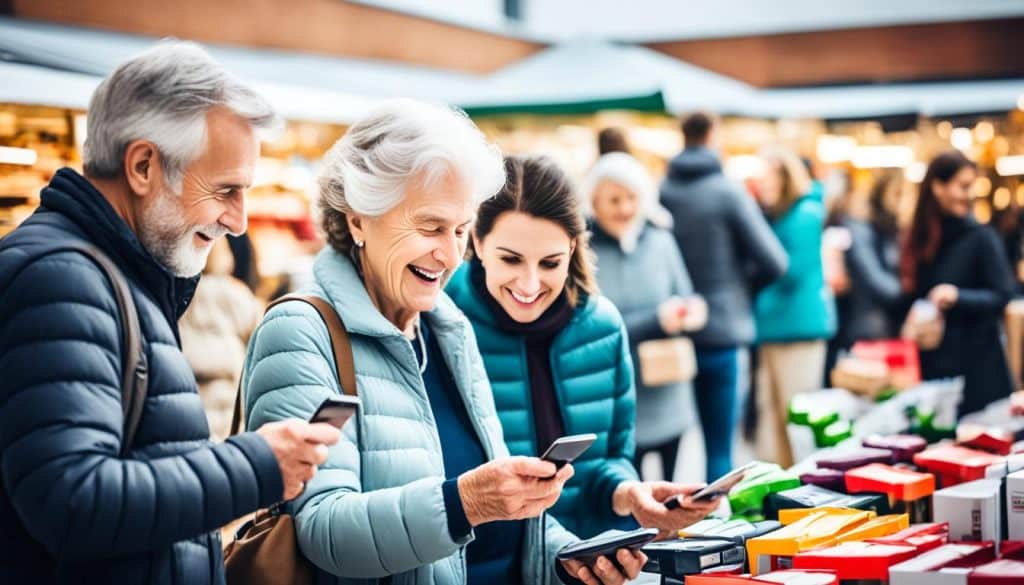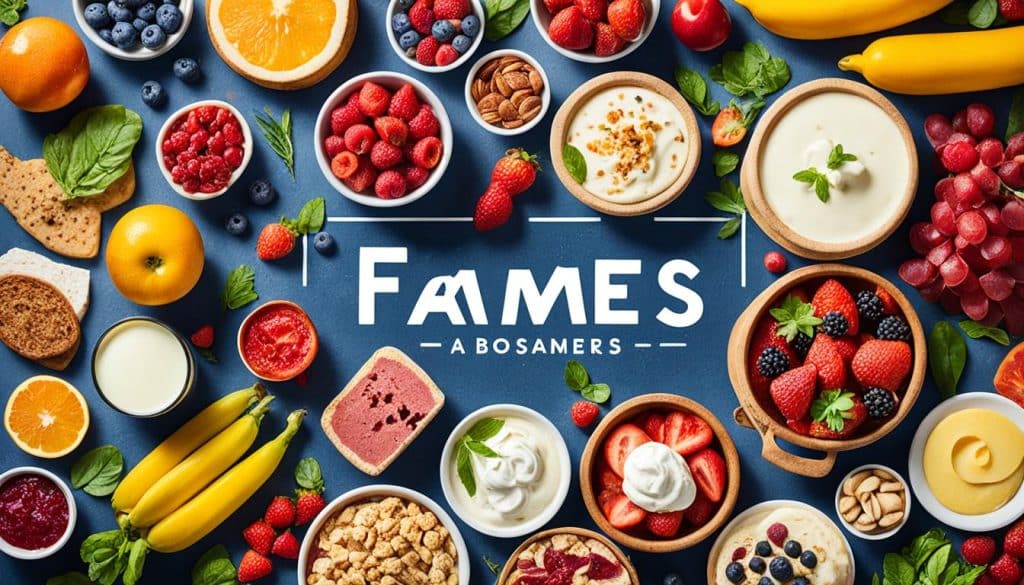Nearly 75% of UK shoppers consider their culture when they buy things. This shows how important local tastes are. It’s key to know what drives Brits to buy certain items. Their choices are shaped by their culture, the economy, and new technologies.
Looking closely at UK market trends, we can see the power of understanding the shopper. For both local and global brands, knowing why people prefer some products helps. It lets companies stay ahead by adapting to changes in the market. We use the latest reports and analyses to explore what UK consumers like.
Key Takeaways
- Nearly 75% of UK consumers’ purchasing decisions are influenced by cultural factors.
- Understanding local market preferences is crucial for both global brands and local businesses.
- Economic conditions and technological advancements are critical in shaping purchasing habits.
- Accurate shopper insights enable businesses to predict and adapt to market shifts.
- Current consumer reports and market analyses offer valuable data on UK market trends.
Introduction to Local Market Preferences
It’s crucial for companies to grasp what local markets in the UK want. They must understand cultural, economic, geographic, and demographic factors well. This article will delve into these aspects to shed light on regional preferences.
Local buying habits are shaped by culture. This includes traditions, regional foods, and social norms. An in-depth look at market preferences shows stark differences across the UK. Scotland, Wales, Northern Ireland, and England each have unique consumer priorities.
Economic conditions greatly influence shopping choices. In wealthier areas, people often opt for luxury items. Conversely, in less affluent areas, there is a higher demand for more affordable products. These economic trends play a big role in shaping what people buy.
Where people live affects their shopping habits too. City dwellers have different preferences from those in the countryside. The availability of shops, both online and offline, impacts what consumers buy. Companies need to take these geographic differences into account.
Age is another key factor in shopping preferences. Young people may prefer eco-friendly and modern products. Meanwhile, older customers often value quality and brand loyalty. A thorough analysis helps brands cater to each age group’s unique needs.
Impact of Culture on Consumer Behaviour
Grasping the role of cultural influences in shaping how people shop is key to winning in the British consumer culture. The blend of traditions, values, and norms across the UK greatly affects buying habits.
Ethnographic marketing offers insights into this complex scene. This method helps businesses understand what people really need and want. It goes beyond traditional surveys and studies to get to the heart of consumer habits.
Take British food traditions, for example. They heavily influence what foods are popular. The cherished Sunday roast and afternoon tea are perfect examples. These habits guide what people choose to eat and drink.
British values, like sustainability and ethical shopping, also steer buying patterns. More folks now want green products and sustainable clothes. Using ethnographic marketing, brands can tap into these trends. They can connect genuinely with their customers.
| Cultural Aspect | Influence on Consumer Behaviour |
|---|---|
| Food Traditions | Dictates preferences for traditional meals, driving demand for certain products. |
| Values of Sustainability | Encourages purchase of eco-friendly products and sustainable fashion. |
| Ethnographic Insights | Helps brands to better understand and cater to consumer needs through immersive research. |
By incorporating cultural influences into their strategies, companies can create deeper bonds with their customers. This approach boosts brand loyalty and paves the way for success in the bustling British consumer culture.
Economic Factors Driving Purchases

Economic factors play a big part in how people spend their money. They really shape our ability to buy and what we prefer to buy. The big players in this game in the UK are how much money folks earn and whether they have jobs.
Income Distribution
How much money people make is key to understanding their spending habits. People in different income groups don’t spend the same way. For instance, the Office for National Statistics (ONS) in the UK notes that income levels affect consumer choices. People with more money might buy fancy items, while those earning less concentrate on essentials.
This is why companies need to know who they’re selling to. By looking into who earns what, shops can ensure their products match what different buyers want. This strategy helps businesses make a bigger impact economically.
Employment Rates
How many people have jobs is also a huge deal for spending habits. When lots of people are working, they tend to buy more because they feel confident about their finances. But when unemployment is high, people have less money to spend, and that shakes up the market.
The ONS says that the UK sees ups and downs in how many people have jobs. These changes play a big role in who has money to spend and how the economy does as a whole. Knowing about job trends helps companies adapt. They can tweak what they offer to match what people need and can afford. This way, they stay relevant even when things change.
| Economic Factor | Impact on Consumer Behaviour | Implications for Businesses |
|---|---|---|
| Income Distribution | Diverse spending patterns based on income levels | Tailoring products to suit various income groups |
| Employment Rates | Consumer confidence and purchasing power linked to job security | Adjusting strategies to align with employment trends |
Influence of Social Media on Local Markets
In the United Kingdom, social media has a big impact on what people buy. It is now key to understand how we connect with products online. Looking at trends, customer opinions, and influencers is crucial.
Trends and Viral Products
Social media quickly changes what people are interested in buying. Instagram and TikTok, for example, can make certain products very popular fast. When people were staying home more, DIY products for the home got really popular, affecting what shops were selling.
Customer Reviews and Testimonials
People often look at social media to help decide what to buy. Real opinions about products make people trust and believe in them more. For instance, positive comments about a new skincare item can make it more popular and increase its sales locally.
The Role of Influencers
Influencers are very important in social media marketing. They can make a brand or product known and liked by many. Big names in the UK start trends that affect what people buy and like. Thus, they can change the market in big ways.
| Aspect | Impact |
|---|---|
| Trends and Viral Products | Sudden shifts in demand, increased sales of niche products |
| Customer Reviews | Enhanced trust, informed purchase decisions |
| Influencers | Heightened brand visibility, increased consumer interest |
Geographic Considerations in Consumer Choices
It is important to know how geography affects what people buy. The place we live can change our shopping habits a lot. This helps companies decide how to advertise based on location.
For example, people living in cities like having many shops close by. They look for quick and various options. But, those in countryside areas value easy access and supporting local businesses. Firms use this info to create better ads for different people.
Looking closer, the local economy’s state is very important. If an area is doing well, people tend to spend more. But, in places with economic troubles, people might spend less.
| Factors | Urban Areas | Rural Areas |
|---|---|---|
| Shopping Preferences | Variety and Convenience | Accessibility and Local Economy |
| Economic Impact | Higher Consumer Spending | Conservative Spending Habits |
The place where you are isn’t just a background. It plays an active role in deciding buying habits. Knowing this helps in making marketing and regional shopping strategies better, crucial for a brand’s success.
Age Demographics and Their Impact on Shopping Habits

Consumer habits change a lot with different ages. The things that each age group likes affect how markets sell to them. This is because of generational marketing and demographic segmentation.
Preferences Amongst Millennials
Millennials love tech and being online. They shop in a way that’s easy and personalised for them.
- Online Shopping: They mainly shop on websites like Amazon and ASOS. They enjoy tech that makes buying things easy.
- Sustainability: Brands that care about the planet, like Patagonia, mean a lot to them. They choose to shop responsibly.
- Reviews and Referrals: They listen to what friends and social media say before buying. It’s a key part of their shopping.
Shopping Behaviours of Baby Boomers
Baby Boomers shop differently, preferring stores they can visit. They stick to the traditional ways, shaped by their own group.
- In-Store Purchases: They enjoy going to places like Marks & Spencer. The feel of shopping matters to them.
- Loyalty Programs: Trust and quality keep them coming back to familiar brands. Loyalty rewards matter to them.
- Television Advertising: TV ads work well on this group, unlike younger people. It’s an old but effective way to market.
Generational marketing and demographic segmentation show how shopping habits vary with age. Knowing this helps businesses aim their marketing right, meeting the needs of different age groups in the UK.
Brand Loyalty and Local Markets
Understanding brand loyalty within local contexts is crucial for companies aiming to secure a dedicated consumer base. Local affinity substantially influences consumer choices, often leading to long-lasting brand relationships.
Evaluating data from various brand preference studies, particularly within the UK, reveals significant insights. These studies show how consumer loyalty programs can create a loyal customer base. They do this by offering tailored rewards and experiences. Moreover, regional preferences and cultural nuances are key in shaping these loyalties.
Here’s a detailed comparison of factors influencing brand not only in the UK but worldwide:
| Factor | Impact on Brand Loyalty |
|---|---|
| Local Affinity | High – Consumers favour brands that resonate with local culture and values. |
| Consumer Loyalty Programs | High – Personalised rewards and localised promotions boost repeat purchase rates. |
| Brand Preference Studies | Moderate – Insights from studies help brands adapt strategies to enhance local relevance. |
| Community Involvement | High – Brands supporting local events and initiatives often enjoy increased loyalty. |
In conclusion, using insights from brand preference studies and effective consumer loyalty programs are key. They help companies strengthen their position in local markets. This shows the significance of tailoring brand engagement to fit local consumer expectations.
Technology Adoption in Different Regions
Technology adoption varies across the UK, especially in e-commerce. Online shopping and digital payments are affected by these differences.
Online Shopping Trends
Online shopping has grown a lot in the UK, but not everywhere at the same rate. Cities like London and Manchester see more people buying online. This is thanks to better internet and tech setups. In contrast, rural areas are behind due to slower tech uptake.
This shows why local plans to boost e-commerce are critical in different places.
Mobile Payment Preferences
Different areas also have varied preferences for mobile payments. In cities, more people use newer payment tech like Apple Pay and Google Wallet. Rural places are not as quick to adopt these systems.
This difference highlights the need for payment services to meet everyone’s needs. This supports growth in e-commerce and includes more people in digital finances.
Looking at tech adoption data shows how regional differences shape where and how people shop online. It also impacts mobile payment use. Knowing these differences helps meet specific area needs, leading to better economic growth for all.
Seasonal Variations in Consumer Spending
Retailers must grasp seasonal shopping patterns to shape their strategies well. In the UK, spending habits follow a clear pattern. They change with the seasons and holiday sales.
Winter, especially around Christmas, sees more spent on gifts and festive events. Sales of electronics, clothes, and luxury items soar then.
In spring and summer, spending on outdoor fun, travel, and home upgrades goes up. Retailers use Easter and summer holidays for special deals.
| Season | Product Categories | Sales Trends |
|---|---|---|
| Winter | Electronics, Clothing, Luxury Goods | High sales due to Christmas and New Year |
| Spring | Travel, Gardening, Sports Equipment | Moderate increase influenced by Easter |
| Summer | Outdoor Furniture, Travel, Apparel | Spike in spending around summer holidays |
| Autumn | School Supplies, Halloween Goods, Apparel | Noticeable rise in sales due to back-to-school and Halloween |
Sales data show how seasons affect the economy. By studying these shifts, shops can adapt. This helps them stay ahead in Britain’s fast-moving retail scene.
Environmental Concerns and Sustainable Choices
In the UK, more people are thinking about the environment when they shop. They choose products not just based on what they want or need. They also think about how these products affect our planet in the long run.
Brands are responding by introducing more eco-friendly products. These products use natural ingredients and are made through ethical practices. This change is influencing how people make choices at home, making sustainability a key factor.
Eco-Friendly Products
Eco-friendly products are becoming more popular. Items such as organic skincare, biodegradable goods, and plant-based foods are leading the way. Clothing made from natural fibres and sustainable shoes are also in demand.
Companies like Lush and Patagonia are admired for their green efforts. Lush works hard to reduce its environmental impact. Patagonia is famous for using recycled materials.
Reusable and Recyclable Packaging
Packaging that can be reused or recycled is important for the environment. Zero-waste stores encourage shoppers to bring their own containers. Brands like Waitrose and the Body Shop are focusing on this to attract those who care about the planet.
This shift towards eco-friendliness shows a major change in the UK. It’s not just about the products anymore. Eco-friendly packaging is also crucial. Both companies and customers are playing a part in moving towards a greener future.
The Role of Local Businesses in Driving Preferences
In the UK, local shops have a big part in shaping what people buy and like. They’re much more than just places to shop. They’re part of our local culture and history. By looking into their impact, we see how they meet and shape what people want.
When customers choose local over big brands, more of their money stays in the area. This boosts local jobs and the economy. Local shops also invest back, helping our communities thrive.
Also, these shops often choose to sell eco-friendly products. They support the environment by finding local suppliers. This choice meets the growing wish for green products and shows they care about our planet.
| Aspect | Local Businesses | Large Corporations |
|---|---|---|
| Customer Experience | Personalised & Tailored | Standardised & Generic |
| Community Involvement | High | Low |
| Economic Contribution | Significant Local Reinvestment | Limited Local Impact |
| Sustainability | Prioritises Local Sourcing | Focuses on Global Supply Chains |
Many small shops have become key spots in their areas. With smart changes and real connections with customers, these places show how local shops can lead in what people like to buy. They bring out the best in community shopping.
New Entrants and Disruptions in the Market

New start-ups are shaking things up across industries. They challenge old ways and bring exciting innovations to the market. These disruptive companies change how people act and make established businesses rethink their plans. We’re diving into how these shifts are reshaping the business world.
Impact of Start-ups
Start-ups are making a big splash in the economy today. They lead with new tech and solve problems in ways we didn’t imagine before. Companies like Revolut in finance and Deliveroo in food service are changing their fields. They quickly react and innovate, showing what disruption in the market looks like.
Emerging Business Models
New business models are essential in today’s economy. Businesses are exploring models like subscriptions, on-demand services, and peer-to-peer sharing. Netflix has changed how we watch shows with subscriptions. Uber has changed how we travel with on-demand rides. These innovators are reshaping consumer habits by making life more convenient and personalized.
| Business Model | Example Companies | Market Impact |
|---|---|---|
| Subscription Services | Netflix, Spotify | Continuous revenue stream and customer retention |
| On-Demand Services | Uber, Deliveroo | Immediate access and flexibility for consumers |
| Peer-to-Peer Platforms | Airbnb, eBay | Direct interaction and increased market reach |
Conclusion: Future Trends in Local Market Preferences
Looking ahead, the local market in the UK is about to change a lot. Consumers will alter their shopping based on culture and economy. Expect big shifts in future shopping habits.
Predictive analytics will be key in understanding these changes. Retailers will use data to know what customers want, tailoring their products accordingly. This shows how vital technology is for planning business moves.
Social media will also impact local markets. People will listen more to influencers and online reviews when buying. Plus, there’ll be a bigger push for items that are good for the planet.
In summary, the future local market trends in the UK will mix old influences with new tech. By using smart analytics and keeping up with trends, companies can meet customer needs. This will lead to happier customers and growing businesses.











